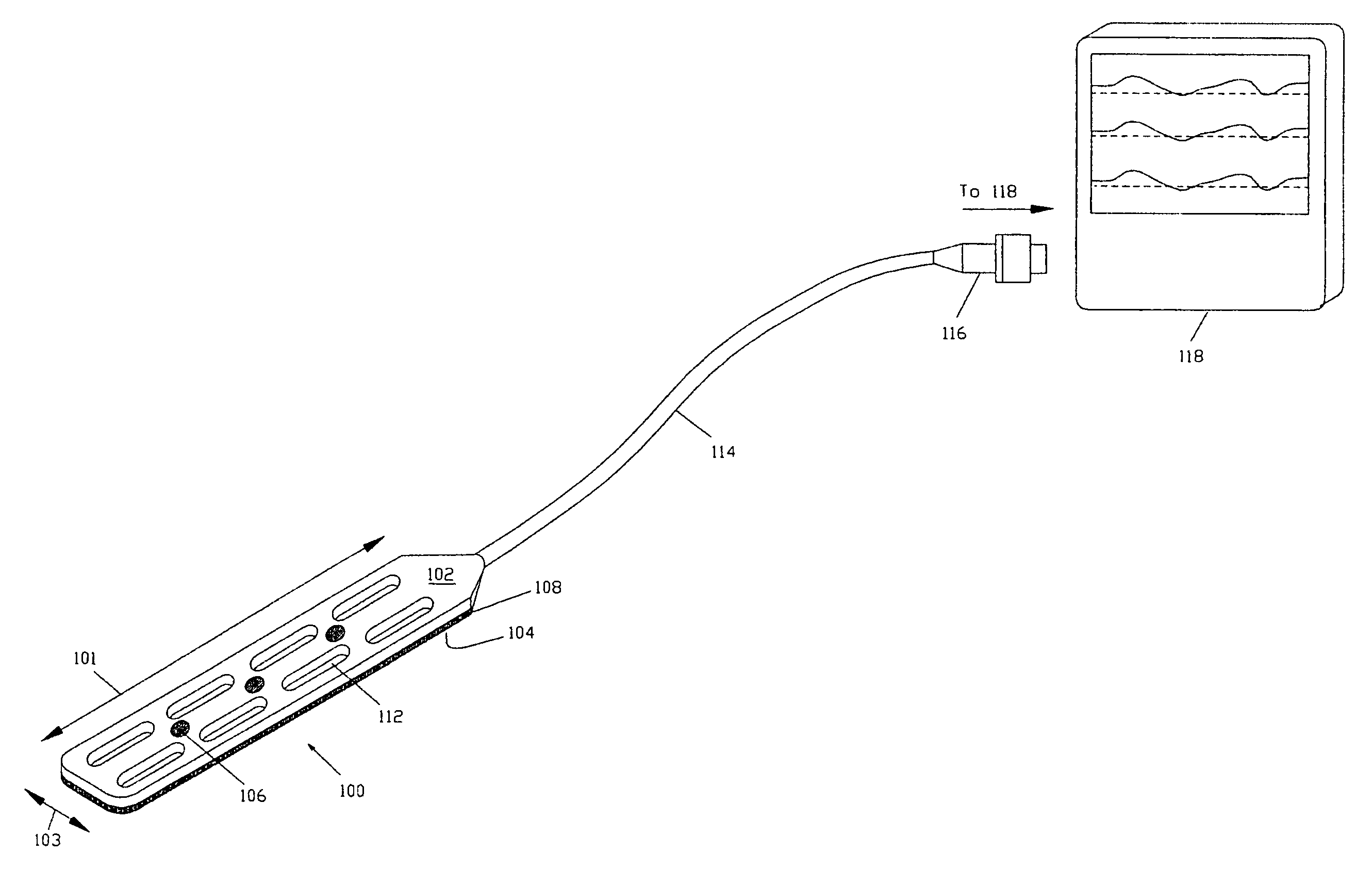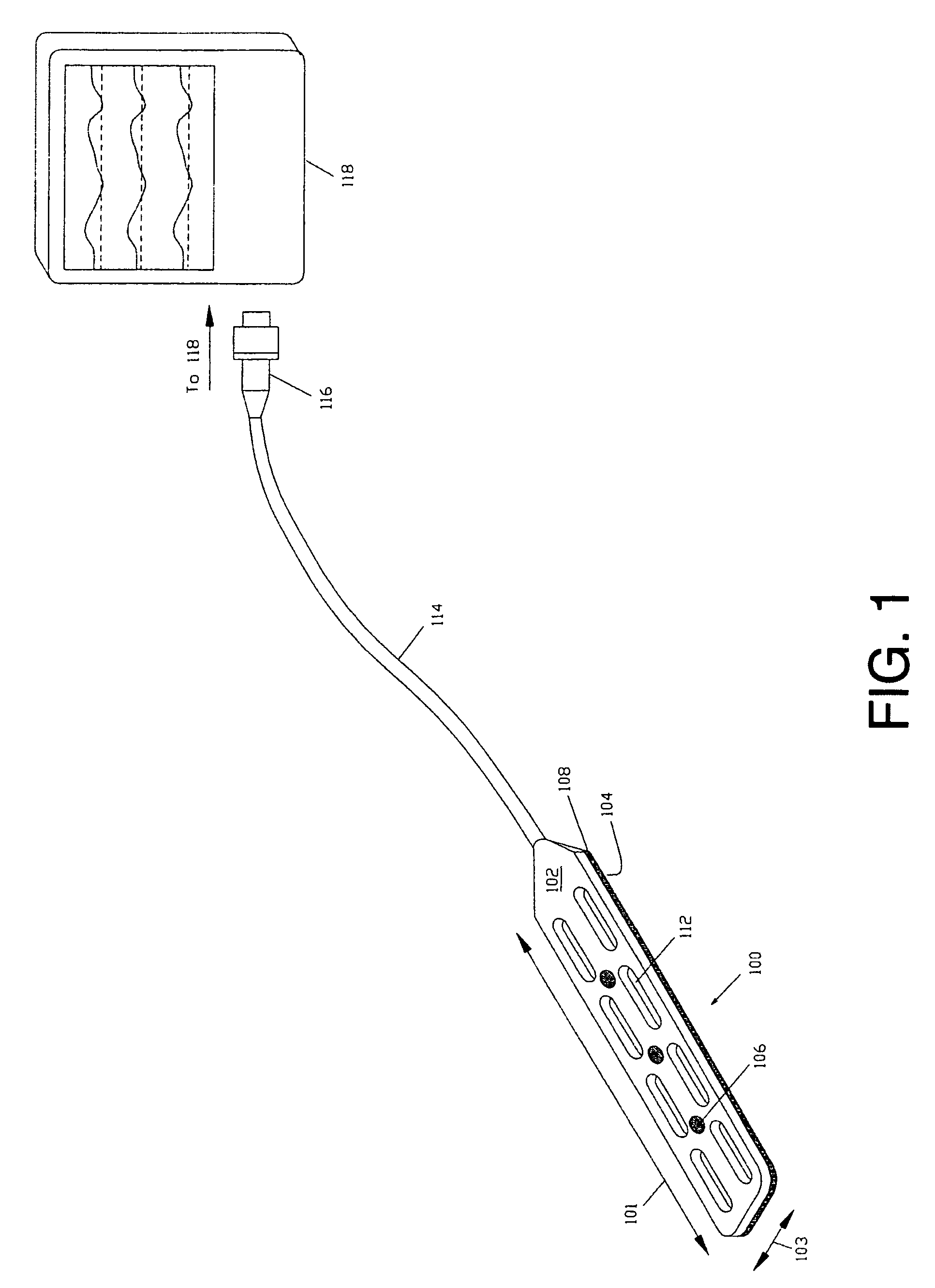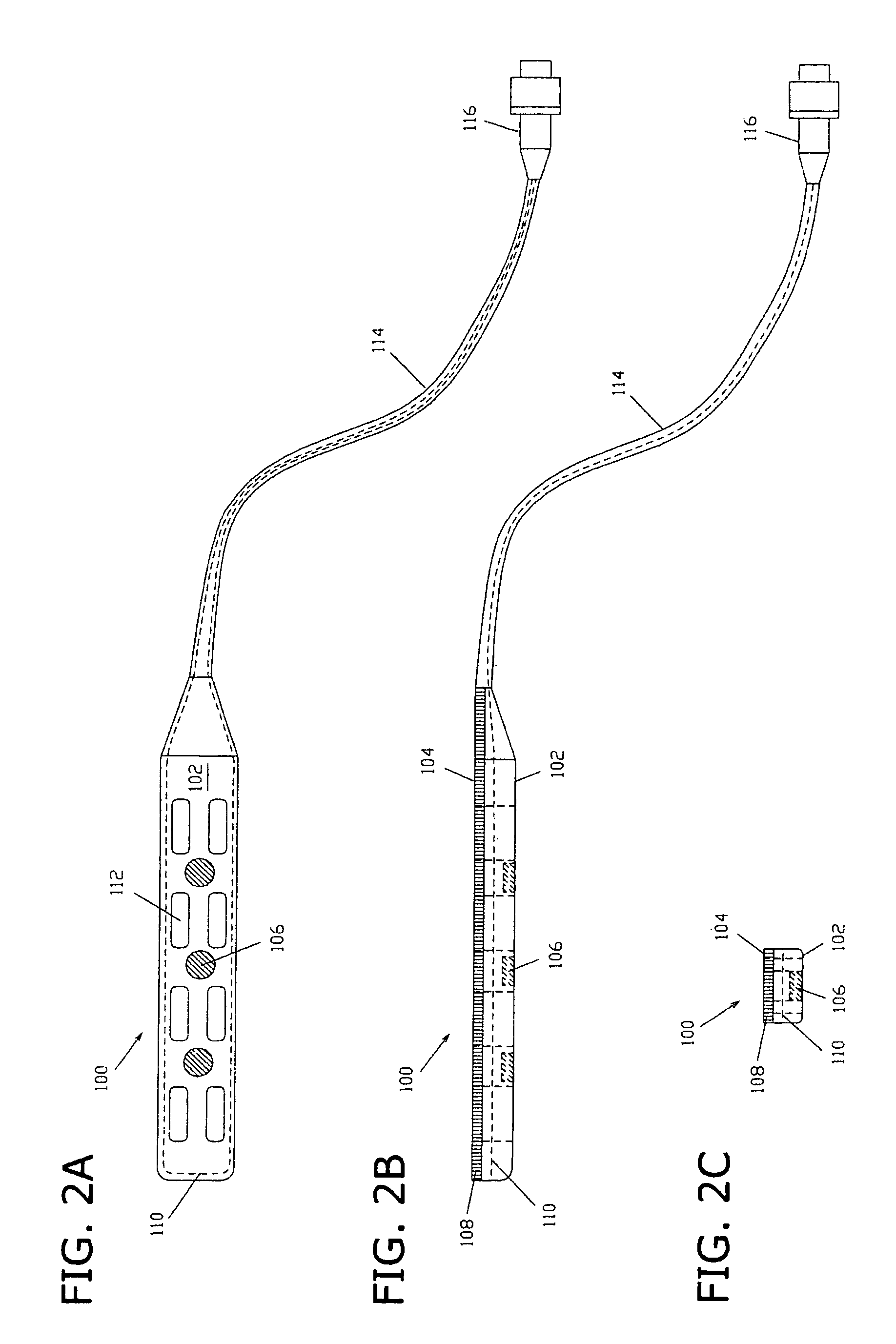Methods and devices for tissue monitoring
a tissue monitoring and tissue technology, applied in the field of tissue monitoring systems and methods, to achieve the effect of good contact and greater ease of manufactur
- Summary
- Abstract
- Description
- Claims
- Application Information
AI Technical Summary
Benefits of technology
Problems solved by technology
Method used
Image
Examples
Embodiment Construction
[0032]A preferred embodiment of a probe 100 of the present invention is shown in FIG. 1 and FIG. 2. The illustrated embodiment of the probe 100 is generally elongated, flat and rectangular in shape. A typical probe length 101 may range between 1 to 6 cm and a typical width 103 may range between 5 to 15 mm. The probe may be made of flexible material such as medical grade silicone and may be reinforced by an embedded fiber mesh (not shown) to enhance its structural integrity. For in-vivo applications, the probe may be preferably made of a radiopaque material such as barium-loaded silicone.
[0033]The probe 100 may have a probe body with a first surface 102 and a second surface 104. The first surface 102 may include one or more sensors 106 for measuring one or more physiological parameters of an adjacent tissue or organ. Depending on the intended application, the probe may include sensors to measure tissue oxygenation (e.g. percent oxygen saturation, oxygen partial pressure, etc.), perfu...
PUM
 Login to View More
Login to View More Abstract
Description
Claims
Application Information
 Login to View More
Login to View More - R&D
- Intellectual Property
- Life Sciences
- Materials
- Tech Scout
- Unparalleled Data Quality
- Higher Quality Content
- 60% Fewer Hallucinations
Browse by: Latest US Patents, China's latest patents, Technical Efficacy Thesaurus, Application Domain, Technology Topic, Popular Technical Reports.
© 2025 PatSnap. All rights reserved.Legal|Privacy policy|Modern Slavery Act Transparency Statement|Sitemap|About US| Contact US: help@patsnap.com



